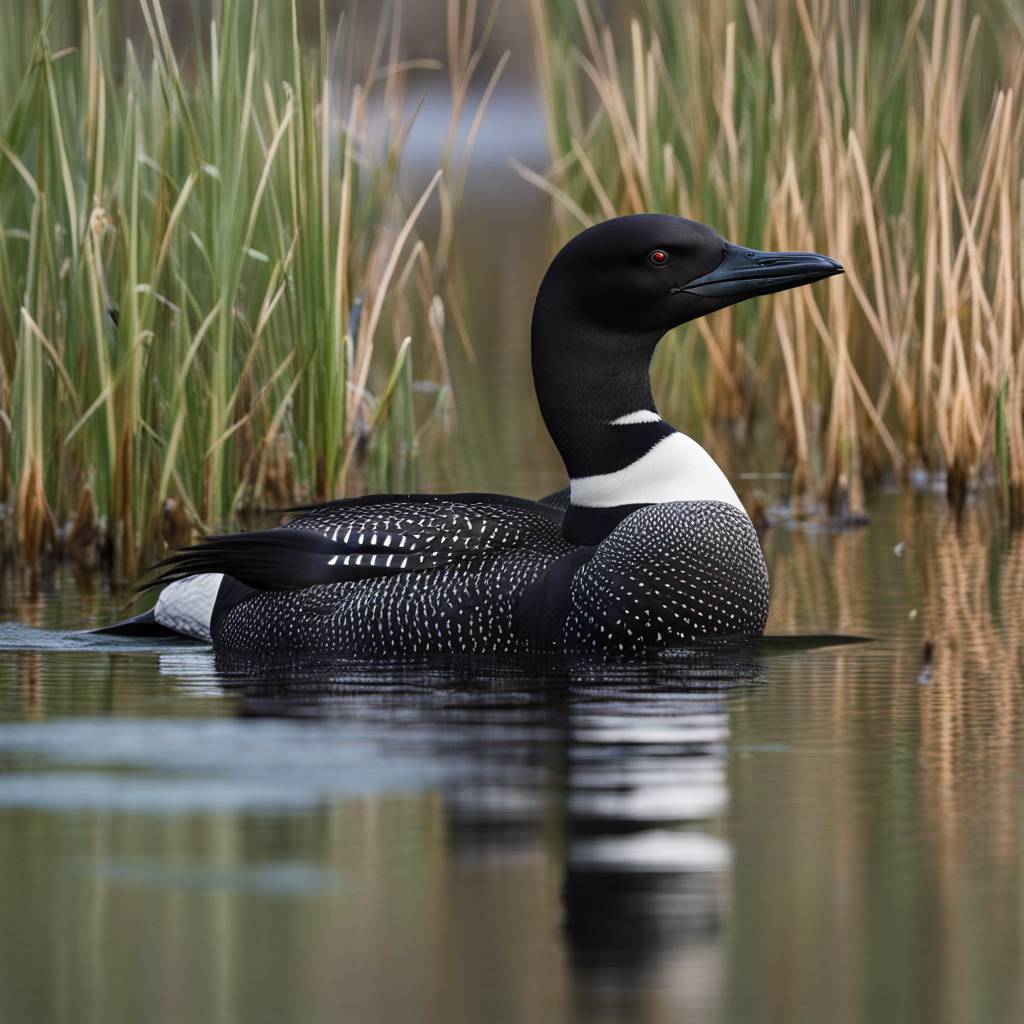A study conducted by Chapman University professor Walter Piper has revealed that the Common Loon, a cherished symbol of the northern wilderness, is facing a threat from climate change. The study, published in the journal Ecology, shows that reduced water clarity in the loon’s habitats is directly impacting their ability to find prey and care for their young. This decline in water clarity is attributed to increased rainfall in July, which has been linked to climate change. The study provides clear evidence of the impact of climate change on the reproductive success of the Common Loon.
The research, conducted in collaboration with researchers from Rensselaer Polytechnic Institute, has found a consistent decline in water clarity over the past 25 years in loon territories. This decline in water clarity has resulted in decreased body weights in adult males, adult females, and chicks. By analyzing various environmental factors, the researchers have identified mean water clarity in July as the strongest predictor of body weight in loons. Heavy rainfall in July negatively impacts water clarity, making foraging more challenging for adult loons and putting their offspring at risk. The rise in rainfall in recent decades has posed significant challenges for the loon population’s reproductive success.
The study is currently investigating the precise mechanisms by which rainfall leads to reduced water clarity. The researchers hypothesize that rainfall may carry dissolved organic matter or nutrients into lakes, affecting water clarity. This unique partnership between loon behaviorists and lake ecologists utilizing Landsat imagery has shed light on the causes behind the decline in loon breeding success in northern Wisconsin. It is now understood that both the loss of water clarity and increased populations of black flies, due to greater rainfall, are contributing to the decline in the loon population.
Professor Piper, who has been studying loon behavioral ecology for over three decades, is expanding his research to Minnesota. By establishing a second study population of loons in Minnesota, he aims to determine whether the decline in breeding success observed by the Minnesota Department of Natural Resources is also linked to a loss of water clarity. This broader investigation will help to further understand the impact of climate change on the Common Loon population across different regions.
The findings of this study have emphasized the importance of understanding the complex interactions between environmental factors and wildlife populations. The partnership between researchers from different disciplines has provided valuable insights into the challenges facing the Common Loon population. By studying the impact of climate change on the loon’s ability to forage and raise offspring, researchers hope to inform conservation efforts and protect this iconic species for future generations.
Ultimately, the research on the Common Loon highlights the urgency of addressing the effects of climate change on wildlife populations. As beloved and iconic species face threats from changing environmental conditions, it is essential to continue monitoring and studying their behaviors to develop effective conservation strategies. The collaboration between researchers studying loon behavior and lake ecology has proven to be a powerful tool in understanding the impact of climate change on the reproductive success of the Common Loon.













